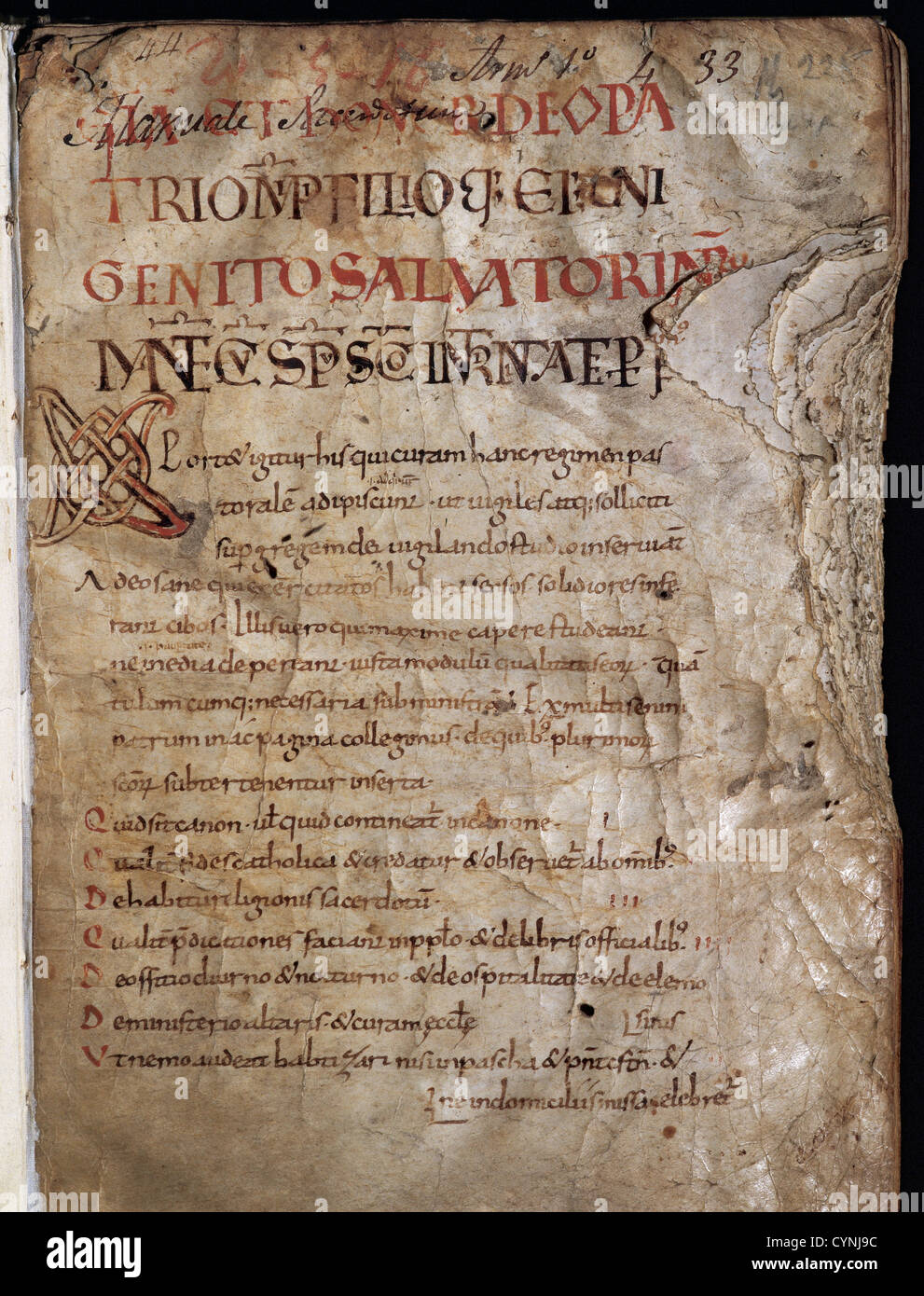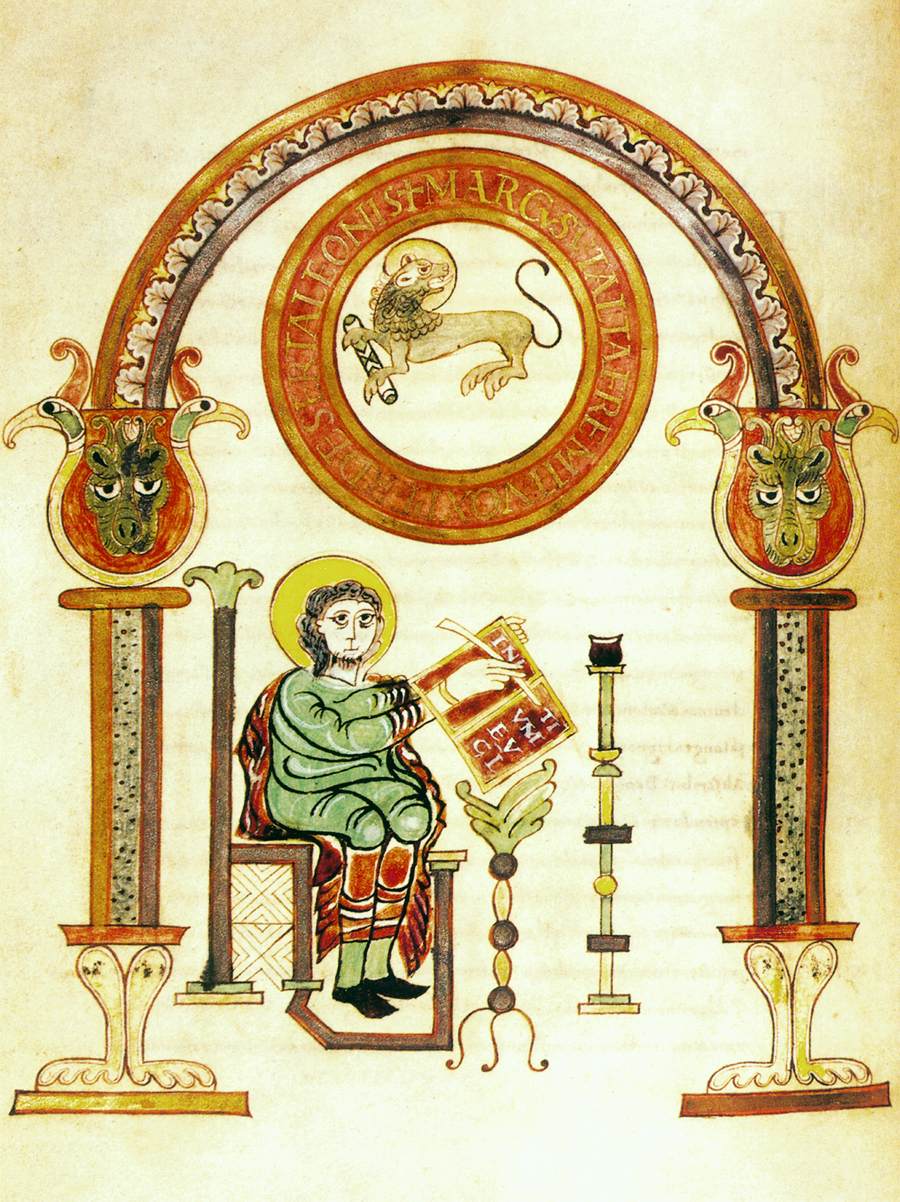

An illuminated manuscript is a manuscript in which the text is supplemented by the addition of decoration, such as decorated initials, borders marginalia and miniature illustrations. Water is used as the vehicle for the pigment and, with the setting of the plaster, the painting becomes an integral part of the wall. Fresco plural frescos or frescoes is a technique of mural painting executed upon freshly laid lime plaster.

It was a conscious attempt to emulate Roman architecture and to that end it borrowed heavily from Early Christian and Byzantine architecture, though there are nonetheless innovations of its own, resulting in a unique character. Carolingian Architecture is the style of north European Pre-Romanesque architecture belonging to the period of the Carolingian Renaissance of the late 8th and 9th centuries, when the Carolingian family dominated west European politics.

Art historians have found that there were numerous other Carolingian frescos in churches and palaces that have since been nearly completely lost. Carolingian art comes from the Frankish Empire in the period of roughly 120 years from about 780 to 900 CE - during the reign of Charlemagne and his immediate heirs - popularly known as the Carolingian Renaissance. some Carolingian fragmentary frescos have survived and have given art historians some material to study in order to theoretically conceptualize Carolingian painting. (This entry was last revised on 08-06-2014.Carolingian Mosaics are created by assembling small pieces of colored glass, stone, pigments, and other materials Carolingian Mosaics, which are created by assembling small pieces of colored glass, stone, pigments, and other materials, were created in Charlemagne's palatine chapel. "Though the Carolingian minuscule was superseded by Gothic hands, it later seemed so thoroughly 'classic' to the humanists of the early Renaissance that they took these Carolingian manuscripts to be Roman originals and modelled their Renaissance hand on the Carolingian one, and thus it passed to the 15th and 16th century printers of books, like Aldus Manutius of Venice" (Wikipedia article on Carolingian minuscule, accessed 11-23-2008). 2, and the Bible of San Paolo fuori le mura, in Rome" (Bischoff, Latin Palaeography: Antiquity and the Middle Ages 208). These large-format bibles were imitated in other places, for example in Freising, and in two bibles dedicated to Charles the Bald, the Franco-Saxon: Paris, BN, Lat. Between the last years of Alcuin (for whom Northumbrian bibles probably provided the model) and 850, St Martin's produced two such bibles every year for the Carolingians, for episcopal churches, and for monasteries. 55 x 40cm, written in two columns of fifty to fifty-two lines.
#Carolingian manuscripts full#
Not only does Tours surprass the others in numbers but a full forty-five of the traceable codices are or were full one volume bibles (pandects) of 420-450 leaves, with a format of c. Martin's), over three hundred from St Gall, rough three hundred from Rheims (which which several scriptoria were involved) roughly two hundred from Corbie, over one hundred from Lorsch, Salzburg, Lyons, and Freising. Some three hundred and fifty manuscripts still survive from Tours (i.e. seven thousand manuscripts and fragments from the late eighth and ninth century, besides the roughly one hundred which can be localised, other still anonymous large, small, and very small groups can be distinguished, but not identified. "Thanks to the diversity in local styles of script among the c. The availability of Carolingian manucripts during the Renaissance undoubtedly contributed to their being used as models for Renaissance calligraphy and later for type fonts. Roughly 7000 manuscripts written in Carolingian script survive from the 8th and 9th centuries. As a result, much of our knowledge of classical literature derives from copies made in the scriptoria of Charlemagne and other scriptoria during the Carolingian Renaissance. During the Carolingian Renaissance, a period of "enlightenment" and relative stability of educational and political institutions, scholars sought out and copied in the new legible standardized Carolingian minuscule many Roman texts that had been wholly forgotten.


 0 kommentar(er)
0 kommentar(er)
